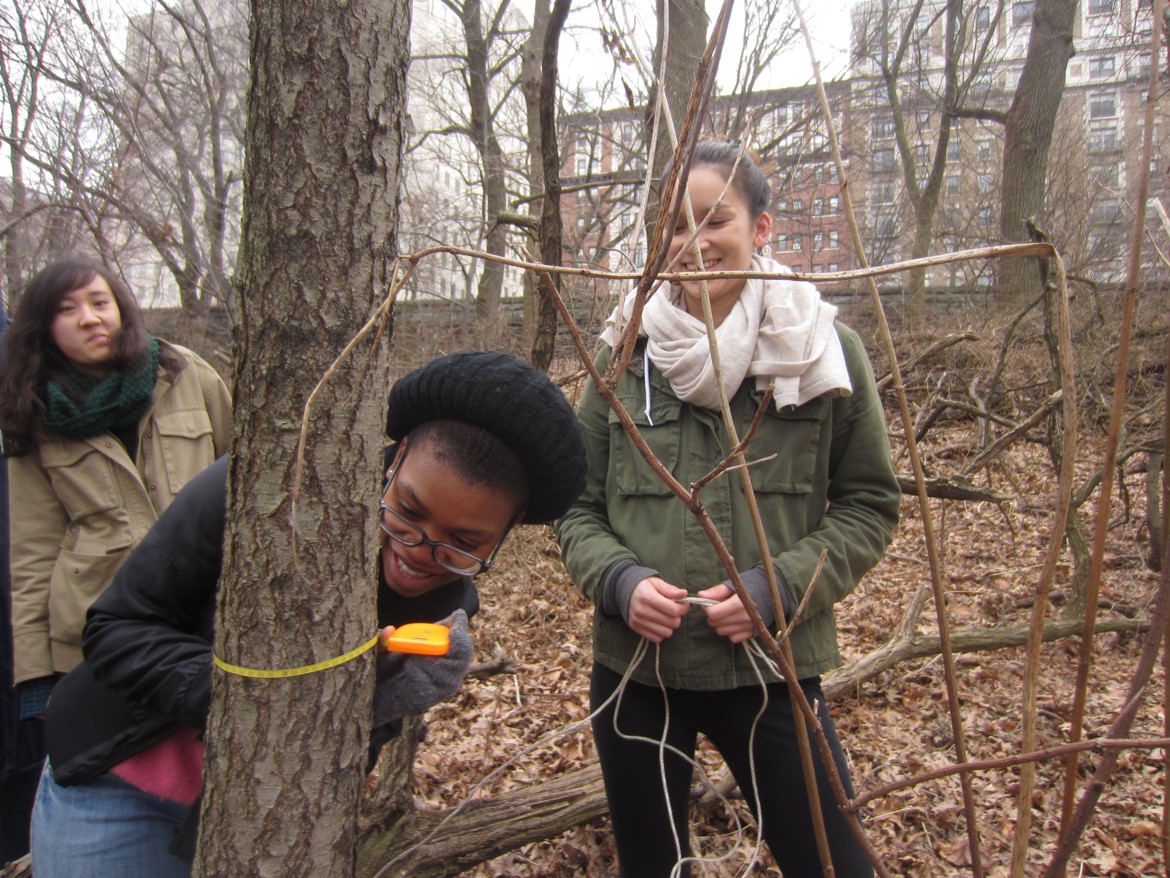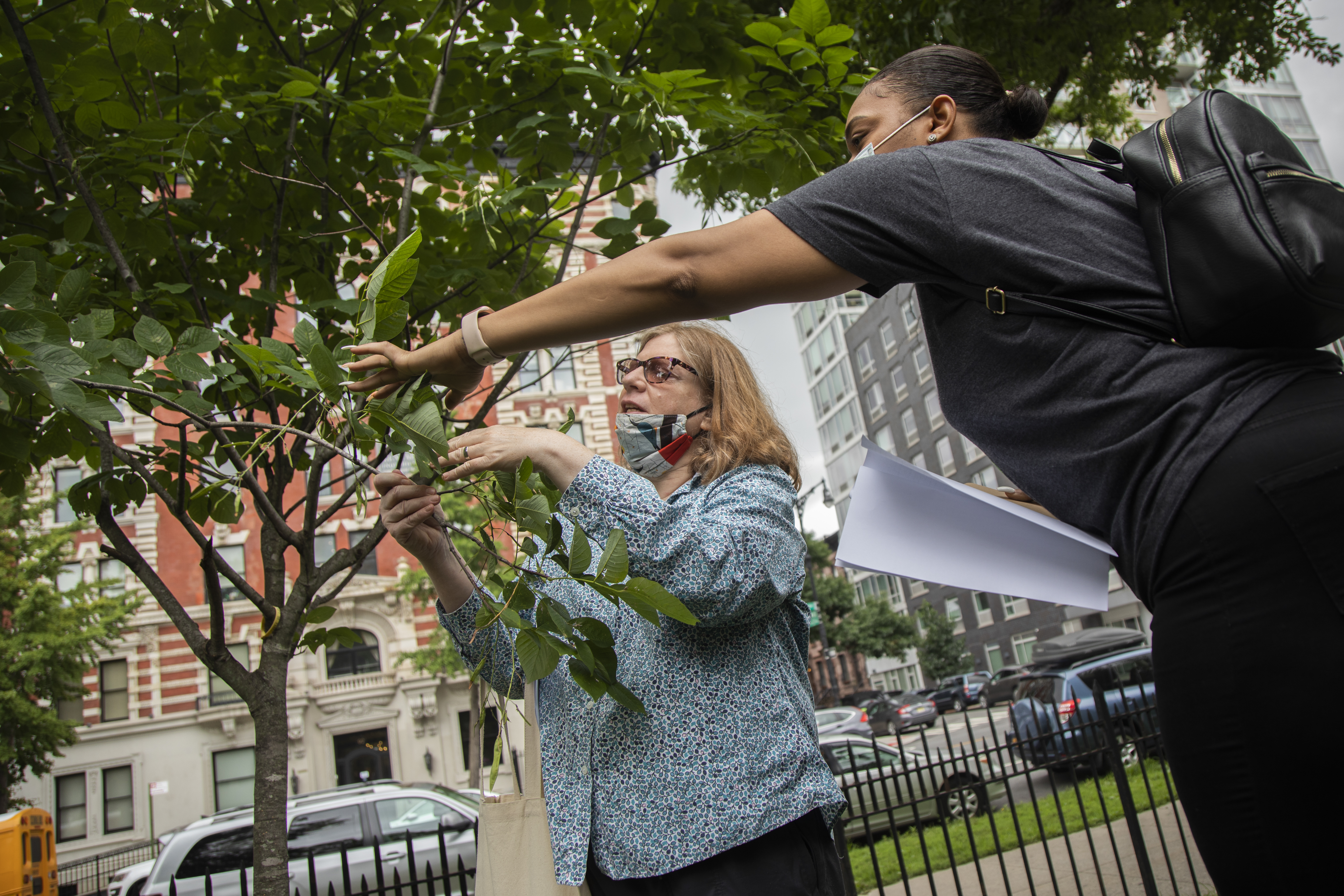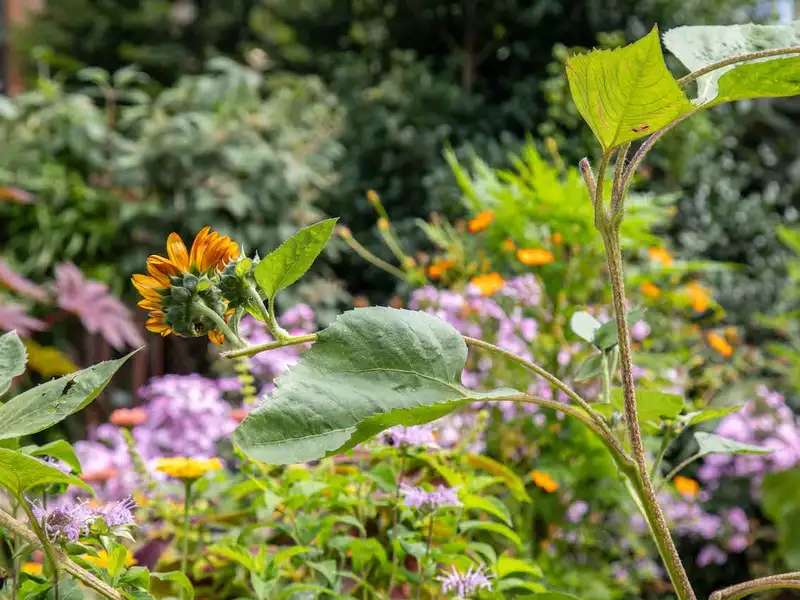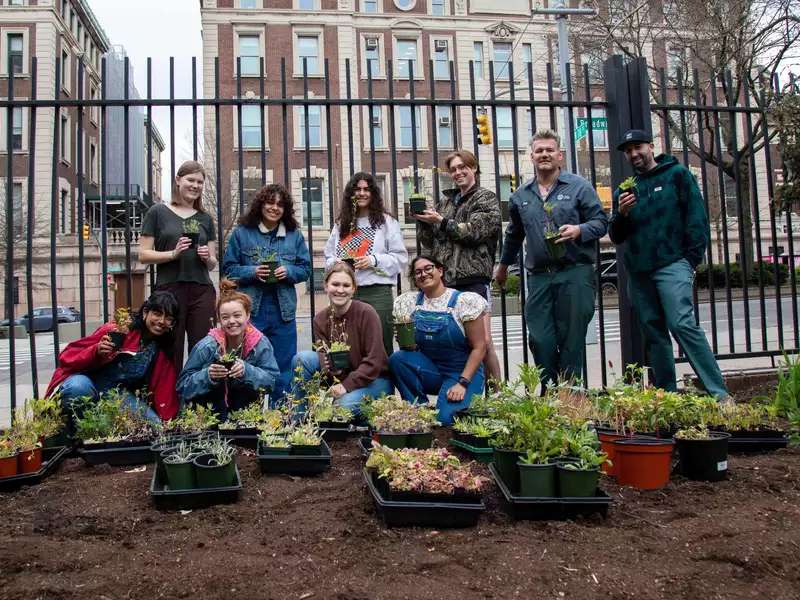In July, a group of scientists, including several Barnard faculty and staff members, published one of the largest urban street tree growth studies ever conducted and found good news: Trees thrive in New York City, especially in the neighborhoods that need them most.
Published in PLOS ONE, the paper, Large-Scale Determinants of Street Tree Growth Rates Across an Urban Environment, looks at how the urban heat island effect — brought on by tall buildings that limit air circulation, sizzling asphalt and pavement, and high concentrations of people living close together simultaneously running appliances and cars — can drive up temperatures in city neighborhoods by more than 7 degrees Fahrenheit. Those living in a city’s hottest and poorest neighborhoods are especially at risk: Extreme heat is the top cause of weather-related fatalities nationwide, and every year, an estimated 350 New Yorkers die prematurely because of hot weather. Black city residents die from heat stress at double the rate of white residents.
The good news is that studies have shown the shade provided by trees can mitigate the health risks posed by heat waves, and New York City officials have prioritized tree plantings with initiatives like the MillionTreesNYC campaign. The City also carefully tracks trees through the “Trees Count” urban tree census. Ten years of Barnard student fieldwork measuring campus and neighborhood trees provided verification of the tree growth rates seen in the NYC street tree data.
For the past decade, Terryanne Maenza-Gmelch, senior lecturer in environmental science at Barnard, has been enlisting the help of her Introduction to Environmental Science students to verify the street tree growth rates by measuring the same set of campus trees each fall for a decade and counting.
“These students have been conducting a campus street tree census, a small version of the citywide street tree census,” said Maenza-Gmelch. “Student teams are assigned areas of the Barnard campus block and remeasure the diameters of the same set of trees each year to contribute to the database. This allows us to calculate growth rates and carbon storage in our campus trees.” Maenza-Gmelch says this hands-on research has great value for several reasons.
“Students love learning about our campus and surrounding neighborhood. The theme of the course is the Hudson River and its forested shoreline. This setting allows us to explore important topics, such as climate change, ecosystem services, biodiversity, environmental injustice, and water quality,” said Maenza-Gmelch. “Measuring campus trees certainly allows students to engage with the trees around campus, both on the sidewalks and in Riverside Park. One of the course’s learning goals is to understand the scientific method and be able to conduct a study that involves posing a question, collecting data, analyzing data, and then discussing and presenting. Students contribute through data collection and by bringing enthusiasm and a fresh perspective each fall.”
This summer’s publication demonstrates the research’s value, and Maenza-Gmelch believes it can ultimately help the communities that most need the shade offered by trees.
“We now know the growth rates of the different tree species,” said Maenza-Gmelch. “We could use this knowledge in conversations with community boards in neighborhoods with fewer trees. We can see if they are interested in speeding up the mitigation of tree canopy disparities in their neighborhoods.”







